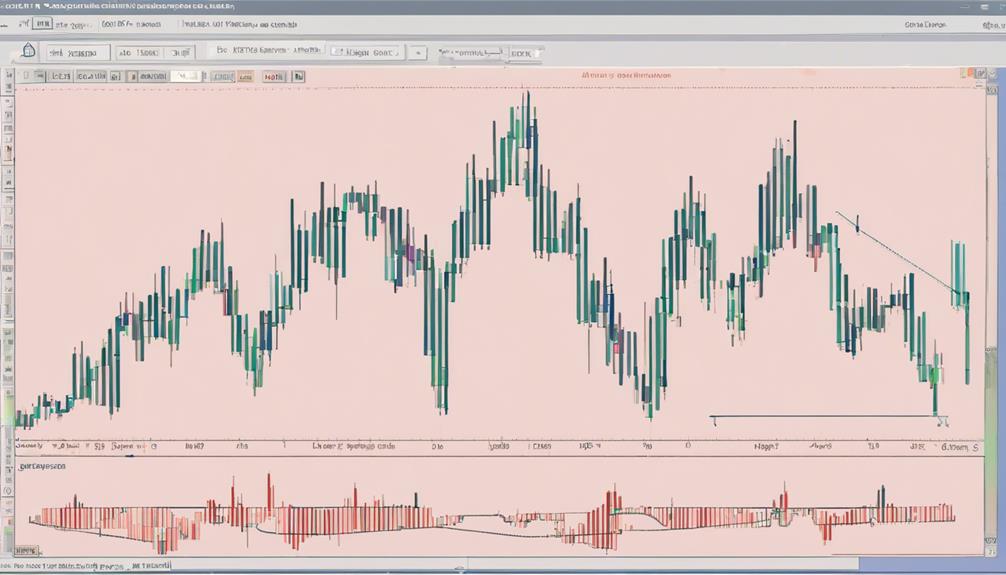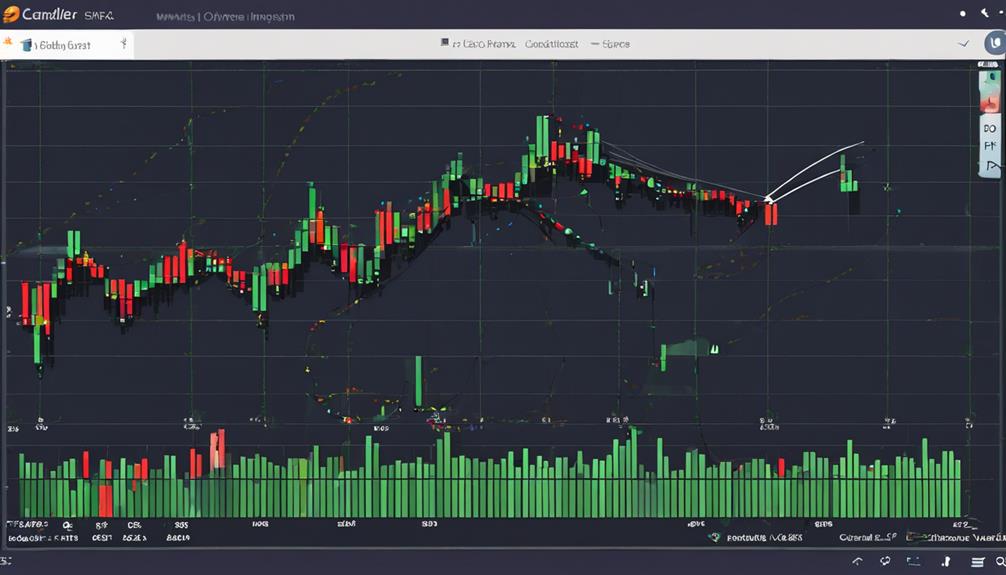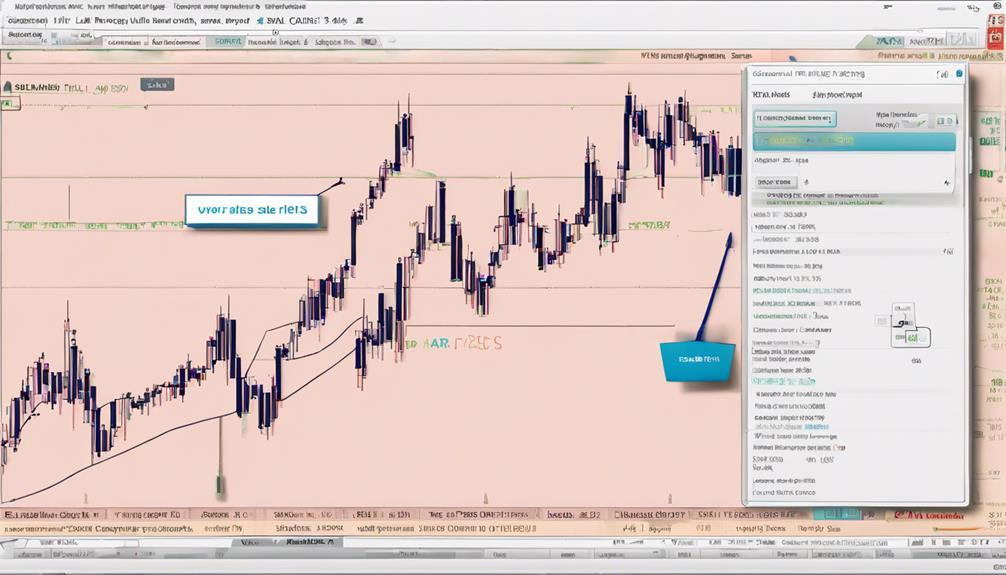Exploring the intricacies of the Parabolic SAR Indicator unveils a realm of possibilities for traders navigating dynamic markets. As a key tool in technical analysis, understanding its nuances can be the differentiating factor between success and missed opportunities.
From deciphering the indicator's signals to crafting tailored strategies, this guide equips traders with a comprehensive understanding to navigate the complexities of asset momentum.
So, how can traders leverage this knowledge to make informed decisions and optimize their trading performance?
Calculation of Parabolic SAR
In the calculation of the Parabolic SAR indicator, the values are derived based on a mathematical formula that incorporates previous SAR values, Extreme Points (EP), and the Acceleration Factor (AF).
The Parabolic SAR is a popular tool used in trading to help identify potential reversal points in the price direction of an asset.
When the asset price is in an uptrend, the Uptrend SAR is calculated by adding the product of the Acceleration Factor and the difference between the Extreme Point and the previous SAR value to the previous SAR value.
Conversely, during a downtrend, the Downtrend SAR is obtained by subtracting the product of the Acceleration Factor and the difference between the previous SAR value and the Extreme Point from the prior SAR value.
The Extreme Points represent the highest or lowest price levels reached in the current trend, while the Acceleration Factor adjusts the sensitivity of the indicator, starting at 0.02 and incrementing by 0.02 with each new Extreme Point identified.
Interpreting Parabolic SAR Signals

Analyzing the correlation between price movements and Parabolic SAR signals provides traders with valuable insights into potential market trends and entry/exit points.
- Parabolic SAR dots above price bars indicate a bearish trend, while dots below signal a bullish trend.
- The reversal points identified by Parabolic SAR help traders determine entry and exit points in the market.
- When Parabolic SAR dots switch positions with price bars, it signifies a potential trend reversal.
- Understanding the relationship between price action and Parabolic SAR dots is crucial for interpreting signals accurately.
Interpreting Parabolic SAR signals involves recognizing the trend direction indicated by the dots. Traders use these signals to gauge the momentum of a trend and potential reversal points.
Strategies for Parabolic SAR

Utilizing Parabolic SAR in conjunction with complementary indicators can enhance trading precision and decision-making effectiveness. Integrating Parabolic SAR with indicators such as RSI or MACD can provide traders with a more comprehensive view of market dynamics, increasing the accuracy of trade signals. Backtesting Parabolic SAR against historical data is essential to validate its effectiveness across various market conditions, enabling traders to fine-tune their strategies for optimal performance.
The 2 PSAR Strategy is specifically crafted to reduce market noise and enhance trend detection capabilities, offering traders a clearer picture of potential entry and exit points. By confirming Parabolic SAR signals with other indicators, traders can mitigate false signals, particularly prevalent in sideways markets. Adapting Parabolic SAR strategies to suit current market conditions is crucial for maximizing profitability.
Traders must remain agile and adjust their approach based on prevailing market trends to ensure efficient trading outcomes. By leveraging Parabolic SAR alongside other indicators and continuously assessing market conditions, traders can enhance their overall trading strategy and increase their chances of success.
Pitfalls in Parabolic SAR Trading

Experiencing challenges in navigating the complexities of Parabolic SAR trading can significantly impact the accuracy of trading decisions and overall profitability. When using Parabolic SAR, traders should be aware of potential pitfalls to mitigate risks effectively:
- Sideways markets: Parabolic SAR can produce false signals in sideways markets, potentially leading to losses if solely relied upon.
- Additional indicators: Its limitations as a trend-following indicator highlight the importance of using additional indicators like MACD for confirmation.
- Market conditions: Adapting strategies to current market conditions is crucial for ensuring the effectiveness of Parabolic SAR in generating accurate signals.
- Supplementing indicators: Avoiding false signals requires supplementing Parabolic SAR with other indicators to confirm trends and steer clear of potential pitfalls in trading strategies.
Understanding these pitfalls and incorporating suitable strategies can enhance the reliability of Parabolic SAR in making informed trading decisions.
Practical Application of Parabolic SAR

Navigating the complexities of Parabolic SAR trading and understanding its potential pitfalls underscores the importance of transitioning to a discussion on the practical application of this indicator.
Parabolic SAR provides traders with specific entry and exit points primarily based on trend reversals, making it most effective in trending markets. The indicator's representation as dots on price charts, with dots switching positions based on the trend direction, aids in visualizing potential market movements.
However, caution is warranted as Parabolic SAR can produce false signals in flat or ranging markets, leading to unprofitable trades. To mitigate this risk, traders often combine Parabolic SAR with other indicators such as moving averages and the Average Directional Index (ADX) to confirm trade signals and enhance overall analysis accuracy.
How to Use the Parabolic SAR Indicator Effectively?
When using the Parabolic SAR indicator, it’s essential to understand its signals and how to interpret them effectively. By gaining insights into parabolic SAR indicator, traders can make better decisions regarding their entry and exit points, as well as their overall trading strategy.
Frequently Asked Questions
How Do You Read a Parabolic SAR Indicator?
To read a Parabolic SAR indicator, observe the dots above or below price bars. Dots above signify a downward trend (sell), while below indicate an upward trend (buy). Understanding dot positions aids in spotting potential trend shifts.
What Is the Best Strategy for Parabolic Sar?
Utilizing Parabolic SAR in conjunction with complementary indicators is akin to harmonizing musical notes for a symphony. Backtesting, strategies like Double Parabolic SAR, and market adaptation can refine its efficacy, providing a robust trading approach for optimal profits.
What Timeframe Is Best for Parabolic Sar?
The best timeframe for the Parabolic SAR indicator varies based on a trader's objectives and strategy. Shorter timeframes like 5 to 15 minutes suit day trading, while daily or weekly charts are better for swing trading. Experimentation helps find the optimal balance between accuracy and frequency.
What Is the Best Acceleration Factor for Parabolic Sar?
The best acceleration factor for the Parabolic SAR indicator is typically set at 0.02 initially. It increases by 0.02 with each new extreme point. Modifying this factor can enhance sensitivity and signal accuracy in trending markets.
Conclusion
In conclusion, the Parabolic SAR indicator is a valuable tool for traders looking to capitalize on asset momentum. By understanding its calculation methods, interpreting signals, and implementing effective strategies, traders can enhance their trading efficiency and profitability.
Despite its advantages, it is important to acknowledge that no indicator is foolproof, and market conditions can be unpredictable. However, by combining the Parabolic SAR with other technical analysis tools, traders can mitigate risks and make informed decisions in their trading endeavors.


